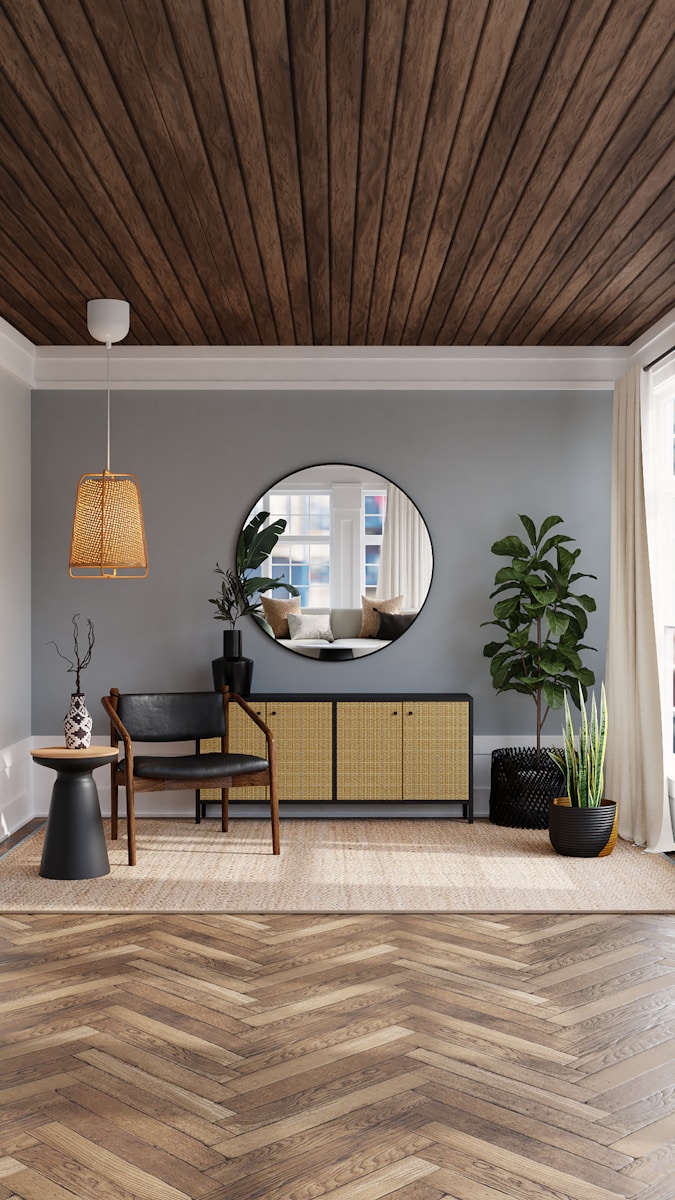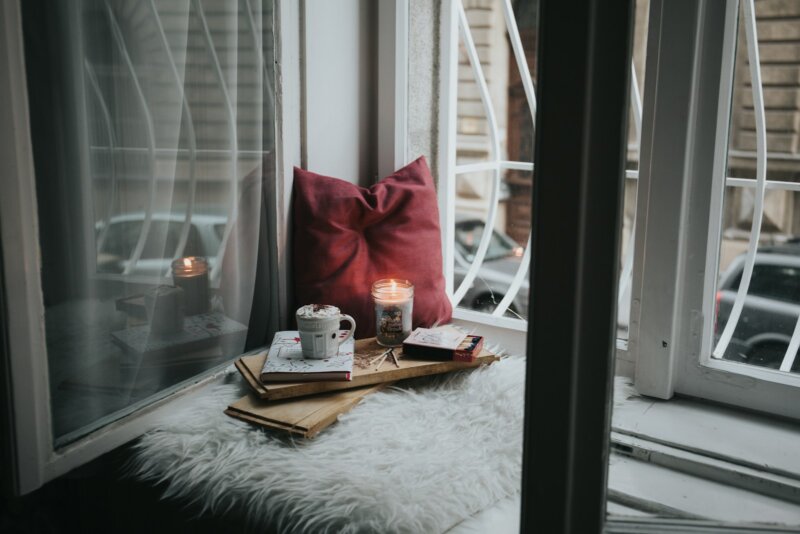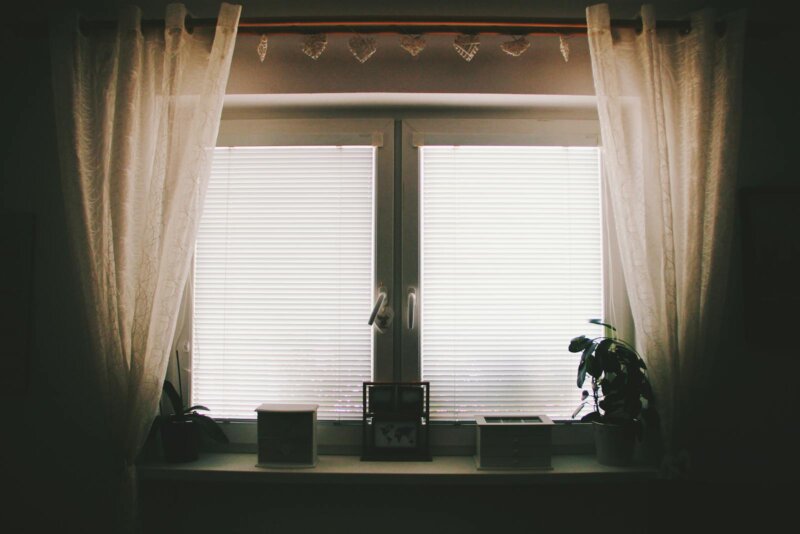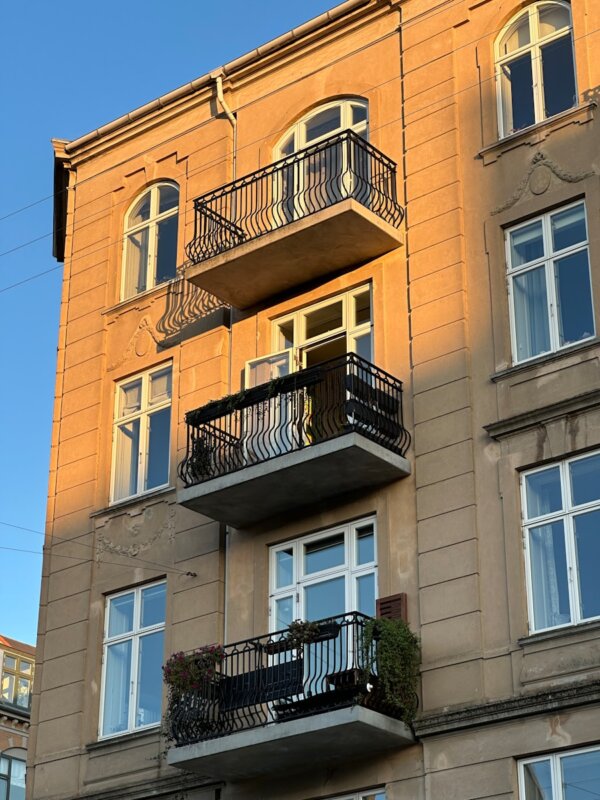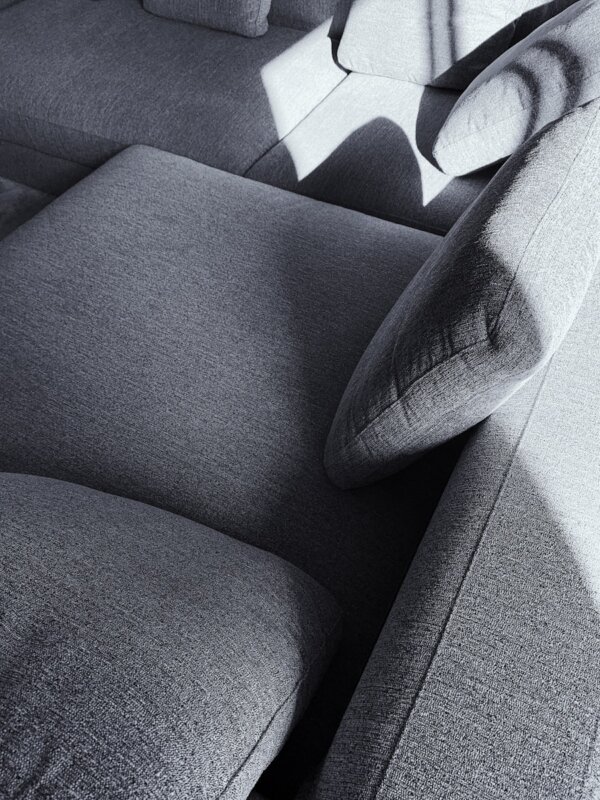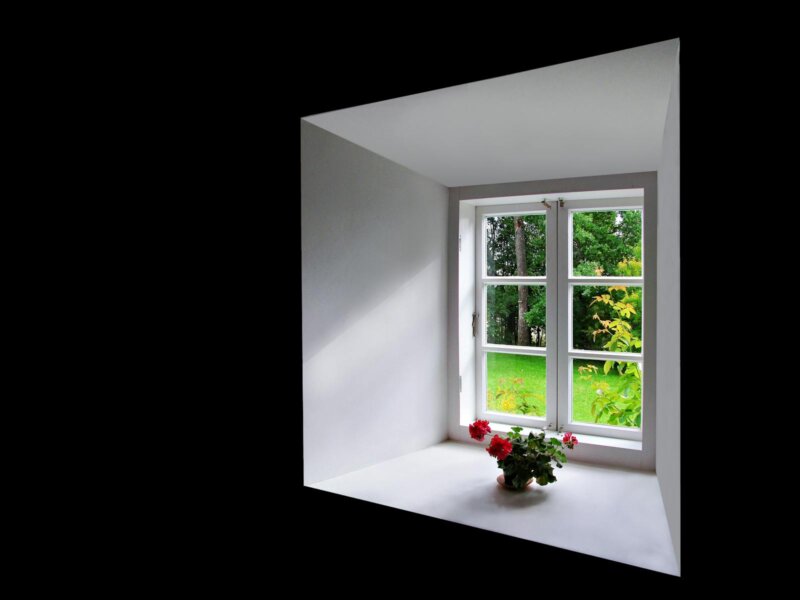Finished the walls and floors, yet the room still feels unfinished? The ceiling is the fifth wall in Interior Design. Change the surface above, and the whole Room Ambiance shifts. Smart Ceiling Decor adds Architectural Character and real Aesthetic Appeal.
This guide shares practical ceiling ideas you can do at home. Learn how to use paint, pattern, beams, and trims for a fast Transformation. Most projects are simple, and a few are weekend level. Small changes up top can make a big visual impact.
Creative Painting Ideas
Paint is the quickest way to refresh a ceiling. It shapes the mood, changes how large a room feels, and highlights architecture.
Contrasting colors for bold effects
Go bold with contrast. Try a teal ceiling with bright white walls for a sharp, modern look. Pair a black ceiling with pale walls to add drama while keeping the space open.
Dark ceilings work well in tall rooms. They lower the visual height and make big spaces feel cozy. One strong color on both walls and ceiling can also stretch a low room, making edges blur and height feel greater.
- Test colors with large sample swatches.
- Use satin or matte finishes to hide flaws.
- Carry the ceiling color onto crown moldings for a crisp frame.
Contrast also plays nicely with wallpaper and textured finishes. Mix and match with care so the room still feels balanced.
Soft hues for spaciousness
Soft colors reflect light and create a calm feel. Pale blue, cream, or warm gray make small rooms look larger. A lacquer finish, which is a shiny hard paint, can lift the ceiling visually by bouncing more light.
These gentle tones support art and furniture instead of competing with them. They shine in rooms with limited sunlight, brightening dark corners without glare. They also suit kids’ rooms or home offices where focus and creativity matter.
- Choose eggshell or satin in humid rooms for easy cleaning.
- Paint vents and smoke detectors to blend, but keep labels readable.
- Finish edges with a steady hand, or use a quality edging tool.
Adding Texture and Pattern
Texture gives the ceiling depth you can see and feel. Pattern adds rhythm and makes the fifth wall a design feature.
Wallpaper for visual interest
Ceiling wallpaper can become the star of the room. Large patterns suit big spaces. Small prints fit compact rooms without overwhelming them. Keep walls light to avoid visual clutter.
Textured wallpaper adds depth without heavy color. Use bold hues to link your color scheme, or pick calm shades for a soft lift. It is also helpful for high ceilings, adding warmth and balance.
- Prep the surface, patch and sand for smooth seams.
- Use a primer made for wallpaper adhesives.
- Start from the room center line to keep patterns straight.
Stenciling and artistic designs
Stenciling uses cut patterns to guide paint, so you get clean, repeatable shapes. Geometric lines feel modern and add motion. Stripes can lengthen a room. Squares and grids create a classic look.
Floral or botanical motifs bring a lively touch. Simple tools help, like a tape measure, utility knife, low-tack tape, and spray adhesive for the stencil. This DIY adds custom detail and can lift a plain ceiling fast.
- Work in thin coats to prevent bleeding under stencils.
- Seal with a clear topcoat if you want durability.
- Combine a subtle stencil with crown moldings for extra polish.
Architectural Enhancements
Beams and moldings add strong Architectural Character. They shape light and shadow, add depth, and change how the room feels.
Wooden beams for rustic charm
Wood beams bring Rustic Charm and warmth. They suit many styles, from modern farmhouse to mountain cabin. Even light faux beams, which are hollow and easier to lift, can look like solid timber.
High ceilings are ideal, since beams lower the ceiling visually and make large rooms feel grounded. They also guide the eye, turning the fifth wall into a focal point. DIY kits exist, but safe mounting to joists is vital. If unsure, hire a licensed pro.
- Match beam stain to floor or furniture tones.
- Run beams along the longest dimension to stretch the room.
- Add simple moldings at beam ends for a finished look.
Coffered ceilings for depth and elegance
A coffered ceiling uses sunken panels arranged in a grid. The 3D pattern draws eyes upward, adds depth, and can make rooms feel taller. Coffers also help hide small ceiling flaws and can soften sound.
Styles range from rustic wood to smooth, minimalist panels. Try two-tone paint, darker inside the coffers and lighter on the beams, for strong shape. Crown molding around each box adds detail and elegance.
- Use lightweight decorative moldings for easier installation.
- Plan lighting within the grid, such as small recessed lights.
- Sketch the layout to keep boxes equal and symmetrical.
Unique Materials and Treatments
Distinct materials make the ceiling memorable. They bring fresh texture, shine, and history to your Décor.
Tin tiles for vintage or industrial appeal
Tin ceiling tiles were popular in the late 1800s. Pressed metal gave homes the look of ornate plaster at a lower cost, with better fire resistance. The style dipped in the mid 1900s, then returned with new finishes and patterns.
Today, tin tiles fit vintage and industrial design. Choose Victorian swirls for tradition, or crisp geometric lines for a modern edge. Tin can hide surface flaws and offers some sound and moisture control, which helps in kitchens and baths.
Most systems install with a simple suspended grid, which levels uneven ceilings fast. Many people also use tin as wainscoting or accent panels on walls. In wet zones, seal seams and keep good ventilation for long-term durability.
Fabric for a soft, textured look
Fabric on the ceiling adds softness and movement. Light materials like chiffon or cotton muslin drape well and feel airy. This approach warms bedrooms, lounges, or event spaces without a heavy build.
Fabric can hide imperfections and create a dreamy vibe. It is usually easy to change later. Keep fabric away from hot lights, and use flame-retardant sprays if needed.
- Stretch fabric across thin battens for neat lines.
- Choose washable textiles to ease care and upkeep.
- Use discreet staples or tracks so hardware does not show.
Bottom Line
Your ceiling can shape mood, light, and style. Try color contrast for punch, or soft hues for a larger feel. Add texture with wallpaper or stencils. Install beams or coffers to boost Architectural Character and Aesthetic Appeal.
Even simple paint or pattern choices change the fifth wall fast. Look up and plan one small project. Thoughtful Ceiling Decor can elevate Interior Design and improve Room Ambiance in a weekend. If structural work is needed, consult a qualified pro for safety.

